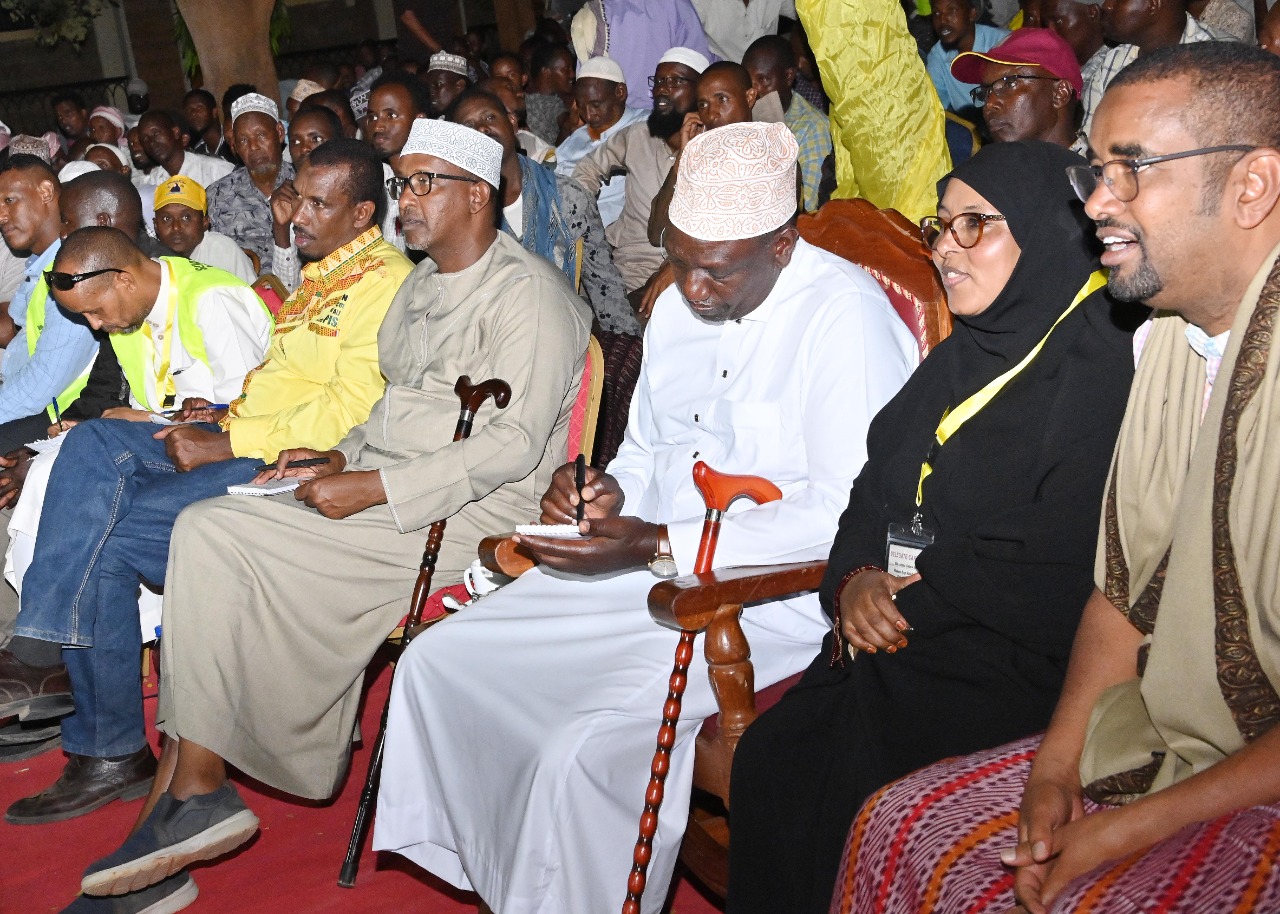

President William Ruto is set to begin a week-long tour of the North Eastern region, as he continues to consolidate support outside his traditional strongholds from the 2022 elections.
The President, who last year formed a broad-based government after a wave of Gen Z protests and incorporated opposition figures, is now courting regions that previously opposed him.
Meanwhile, Mount Kenya, a key voting bloc that propelled Ruto to victory, appears to be slipping away as his former Deputy, Rigathi Gachagua, consolidates support away from the Kenya Kwanza government.
A week ago, Ruto spent five days in Western Kenya, launching development projects and engaging with residents in a bid to win over a region that overwhelmingly backed Raila Odinga in 2022.
This week, the President will tour North Eastern counties, a region that has received fewer presidential visits in the past, as part of his agenda to promote equitable economic development across the country.
On Monday, Eldas MP Adan Keynan described Ruto’s visit as crucial, as it would allow the President to engage with residents and commission development projects.
"The visit is important for us in North Eastern because it gives the President an opportunity to connect with the people and launch key development projects," Keynan said.
In the historic visit, Ruto will tour Mandera, Garissa, Wajir, Marsabit, and Isiolo counties—sparsely populated regions that still hold significant sway in presidential elections.
Signalling his political charm offensive ahead of the 2027 elections, the ruling UDA party has intensified grassroots activities, including the opening of party offices in the region.
On Sunday, UDA Secretary General Hassan Omar and Senate Majority Leader Aaron Cheruiyot visited Mandera County, where they opened the party’s county office.
Local UDA leaders, including current and former MPs, also held town hall meetings to market the party ahead of President Ruto’s tour. The region has slightly over 700,000 votes.
Mandera County, which has 217,023 registered voters, according to the 2022 IEBC voters’ register, is a familiar battleground for Ruto.
In the 2013 elections, Ruto’s now-defunct United Republican Party (URP) dominated North Eastern Kenya.
Now, as he seeks to reignite his influence through the UDA party, he faces stiff competition from the United Democratic Movement (UDM) led by Mandera Senator Ali Roba.
Garissa County, where the President is scheduled to hold a Cabinet meeting this week, has 201,473 registered voters, while Wajir has 207,758 voters.
Marsabit County has 166,912 registered voters, while Isiolo has 89,504, according to the 2022 IEBC register.
Roba, has launched an aggressive campaign in the region, setting the stage for a political showdown ahead of Ruto’s tour.
Over the weekend, Roba led a series of rallies in Mandera, exposing the growing sibling rivalry within Kenya Kwanza.
Criticizing UDA’s sudden surge of interest in the region, Roba accused the party of opportunism, claiming its activities in Mandera were only triggered by Ruto’s impending visit.
"The President will visit and leave in a few days. What next? A rushed and poorly planned initiative is bound to be short-lived," Roba warned.
"If they truly had the party’s best interests at heart, they should have focused on organizing a united and dignified welcome for the President instead of sowing division by pitting sister parties against each other. Leadership is about building, not tearing down."
Ruto’s visit also comes just days after the High Court of Kenya in Garissa annulled the 2019 Census results for Wajir, Mandera, and Garissa counties, citing major discrepancies in the population figures.
The 2019 census indicated that the Somali population in Kenya had risen to 2.7 million, making it the sixth-largest ethnic community in the country.
In the case, Abdullahi Bashir Sheik and 24 others accused the Kenya National Bureau of Statistics (KNBS) and four other entities of overseeing a flawed counting process.
They argued that the November 2019 census failed to accurately represent the actual population of the region.
Justice John Onyiego last week nullified the 2019 census results for the affected constituencies and directed KNBS to conduct a fresh mini-census within a year.
With politicians from the region pushing for an expedited recount, all eyes will be on President Ruto during his visit, as his remarks on the issue will be closely scrutinized.
The cancellation of the census figures could potentially reshape Kenya’s political landscape ahead of the 2027 elections, affecting constituency boundaries, resource allocation, and political representation.
During his tour, President Ruto is expected to inspect and launch key development projects, including the Garissa LAPSSET project, Affordable housing projects and the ongoing construction of the Tana River Bridge.
Historically, presidents have avoided or rarely visited North Eastern Kenya, choosing to do so only close to general elections.
As Ruto embarks on this historic tour, the visit will serve as a litmus test for his ability to win over a region that has long felt marginalized.
With the 2027 elections on the horizon, his engagements, promises, and policies in North Eastern Kenya could determine whether UDA cements its foothold in the region—or loses ground to rival parties like UDM.

